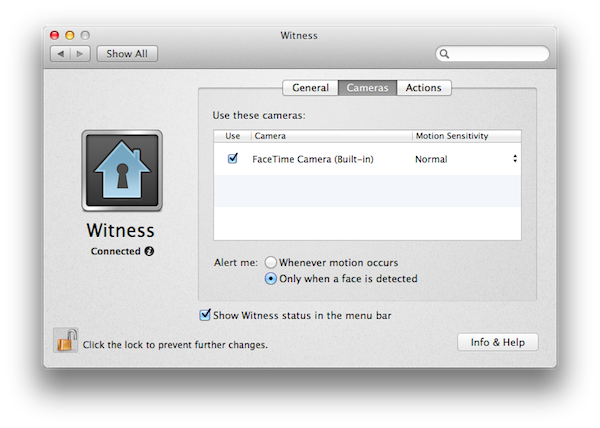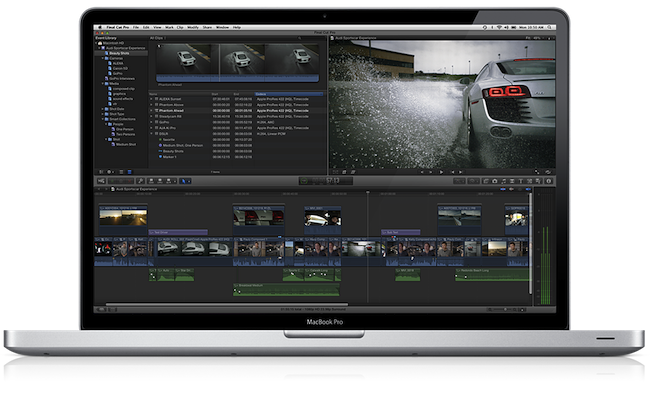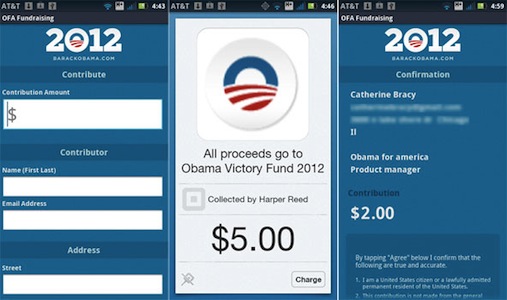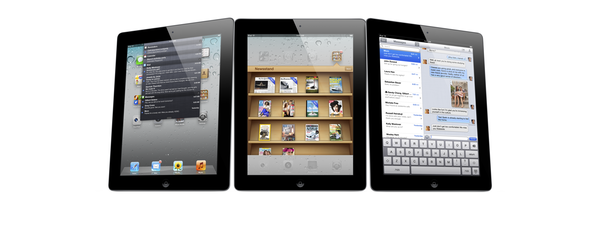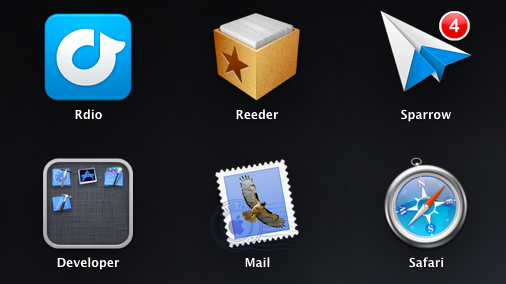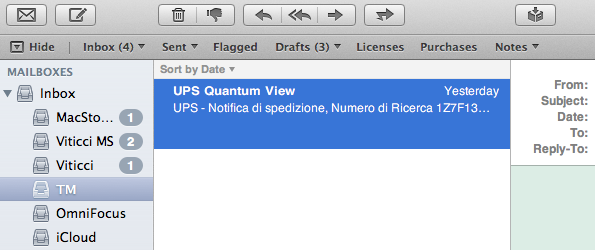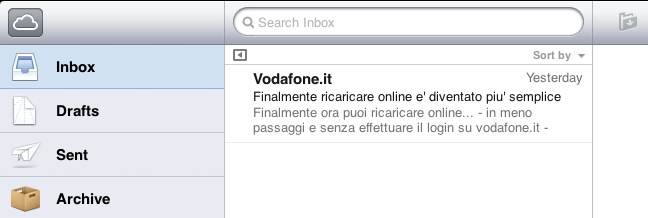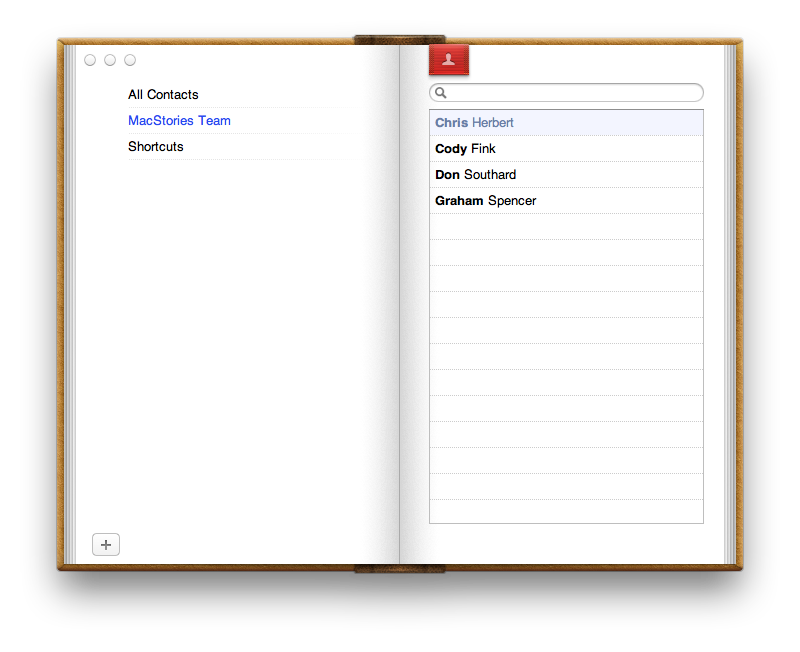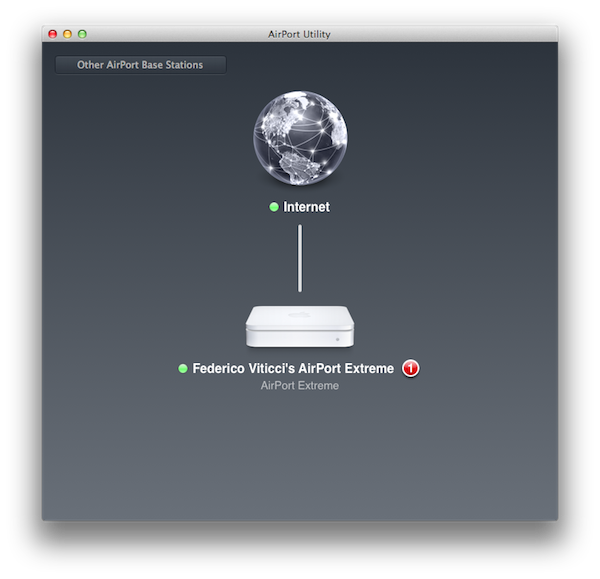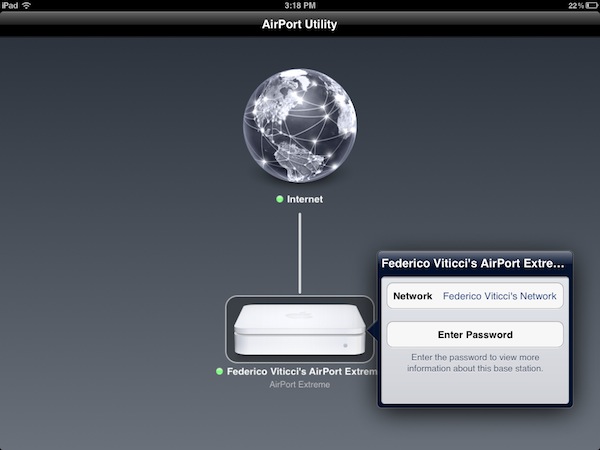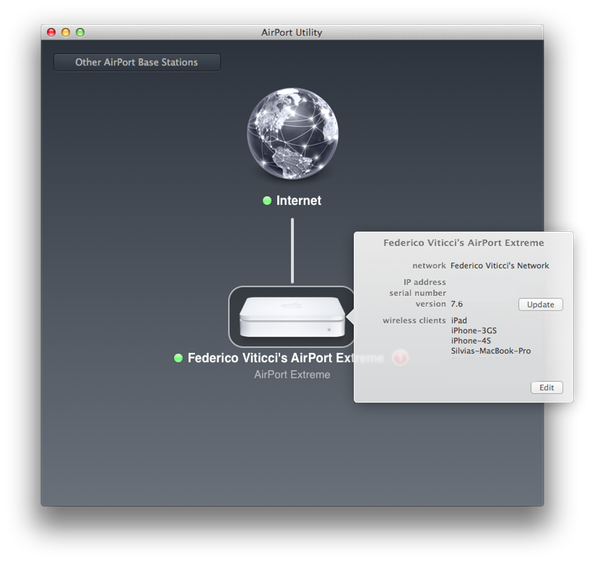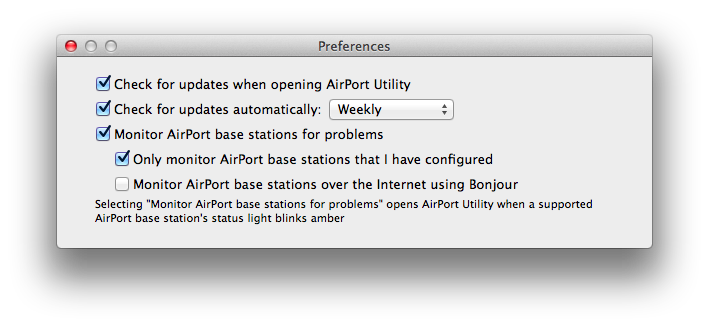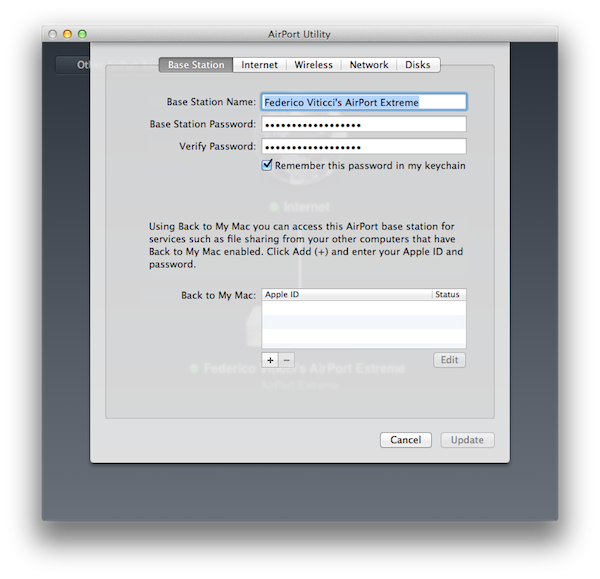Here are today’s @MacStoriesDeals on iOS, Mac, and Mac App Store apps that are on sale for a limited time, so get them before they end!
#MacStoriesDeals - Tuesday
January 2012 In Review
Starting this month we’re launching a new, month-in-review feature that will summarize the past month’s big news stories, apps and editorials that we have published on MacStories. Each month we’ll give links to all those big stories and give a summation of the big events: for example, this month we detail Apple’s Education Event and include links to all the important articles related to it. We’ll also include links to new apps, app updates and app reviews that we think are worthy of your attention. Finally, we’ll be including links to our standout editorial stories from the past month - the stories we are most proud of.
We hope you enjoy this new feature and find it useful. Our hope is that it gives some perspective on the events of the past month, particularly when news flows so fast these days.
Apple’s Education Event
The big news of January was probably Apple’s Education Event that was held on January 19th in New York. The education-themed event saw the release of iBooks 2.0 which featured the ability to read new multi-touch books and, specifically, textbooks. In order to promote the creation of these new multi-touch books, Apple also released the free iBooks Author application for OS X, allowing virtually anyone to create a beautiful and interactive book for the iBookstore. The event also saw the release of an iTunes U app for the iPhone and iPad to give students and teachers more control over their courses.
Apple’s Q1 2012 Earnings Call
The other significant piece of news from January was Apple’s Q1 2012 earnings call in which Apple revealed it had just had the best quarter in its history, posting $46.33 billion in revenue, selling 37.04 million iPhones and 15.43 million iPads during the blowout quarter. The Next Web pointed out an interesting statistic that by selling 37.04 million iPhones during the 14 week quarter, Apple had actually sold more iPhones than babies had been born during the same time period. We also posted some of the more interesting details and statistics from the earnings call in a follow-up post which is well worth the read. A final article related to the earnings call is the one about how the iPhone ASP rose in Q1 2012, despite the addition of the “free” iPhone 3GS.
Apple Continued To Rollout Products Internationally
January saw the next big wave of iPhone 4S launches in China and 21 other countries on January 13th, making the 4S available in over 90 countries. Apple’s recently launched iTunes Match also became available in 19 additional countries around Europe and South America - taking the total number of countries with iTunes Match to 37 - making it another quick international rollout.
Supplier Responsibility
This month the issue of working conditions at Apple’s suppliers again came under close inspection. It started with the NPR program ‘This American Life’ investigating the issue in one of its episodes. Apple then released its annual Supplier Responsibility report (earlier than last year) and revealed its list of suppliers for the first time. Towards the end of the month, The New York Times featured an editorial on the issue - focusing on Apple. We also linked to a paidContent article that put the NYT article into perspective and rationally laid out the reality that Apple can’t solely change manufacturing overnight.
Jailbreak
January saw the untethered A5 jailbreak finally being released, to the joy of many iPhone 4S and iPad 2 owners who had been holding out for a jailbreak for quite some months. In fact the demand for the jailbreak saw nearly 1 million downloads of the tool in just the first 24 hours. Jailbreak certainly hasn’t become irrelevant just yet.
New SVP of Retail
On January 31, Apple announced John Browett has been hired as new Senior Vice President of Retail, a position left open since Ron Johnson left Apple to become the new CEO of J.C. Penney. Browett has been the CEO of European technology retailer Dixons and previously held various executive positions at Tesco, including CEO.
Everything Else
- Kickstarter: TidyTilt, a Smart Cover Design with Smart Options for the iPhone
- Infinity Blade Franchise Exceeds $30 Million in Revenue
- Apple Releases iOS 5.1 Beta 3
- App Store Search Results Get “Quick Look” Previews
- iPad 3 To Launch In March with LTE, Retina Display, Quad-Core Processor
- Camera+ Reaches 6 Million Downloads, Over $5 Million In Revenue
- Virgin America Names Jet “Stay Hungry, Stay Foolish” After Steve Jobs
- Adam Lashinsky’s Inside Apple Is Now Available For Purchase On The iBookstore
- Evernote Working On Todo List App Following Egretlist Acquisition
- Lion Full-Screen, New Tab Page Sneak Into Early Firefox 12 Build
- Obama, Romney Election Campaigns To Use Square In Fundraising Efforts
New apps, updates to apps and reviews that we published in January 2012.
- Google Translate for iOS Updated with iPad Support
- Day One 1.5 for iOS: Now With iCloud Sync
- Day One for Mac 1.5: iCloud Sync, Markdown, Full-Screen
- Analog 1.1 Launches With New Photo Options, Filters
- PDF Expert 3.2 Brings Full PDF Searching And Better Support For Bluetooth Keyboards
- Fantastical 1.2 Adds International Languages To Event Parsing Engine
- Smile’s PDFpen for iPad Is A Powerful 1.0 Version
- Calendr for iPhone: Fast and Elegant Event Creation
- Phraseology for iPad: Write, Remix, and Markdown
- Yoink 2.0 Brings Smarter Drag & Drop To Lion
- xScope 3: Measure. Inspect. Test.
- Clear: An Interview With Impending’s Phill Ryu
- Witness Home Alarm System Gets AppleScript Support, Sneak Peek, Face Detection
- Apple Releases iOS-like AirPort Utility 6.0 for Lion
- Apple Updates FCP X With Multicam Editing, Enhanced XML
January Quick Reviews
- Quick Review: Werdsmith for iOS
- Quick Review: Consume As An Online Usage Monitor
- Quick Review: Wikibot
- Quick Review: NewsFlash Aggregates The World’s Headlines
A selection of the best editorial pieces that we published on MacStories in January 2012.
- My Educated Guess On What The Next Apple TV Will Be
- On Comments
- Mac App Store: Year One
- New Apps for 2012
- New Twitter Clients
- Review: Logitech Tablet Keyboard for iPad
- The Apple Community
- The Problem With The iOS Home Screen
- The Apple Of Gaming
- The State Of iCloud-enabled Apps
- The iOS-ification Of Apple’s Ecosystem
January MacStories Reading Lists
Witness Home Alarm System Gets AppleScript Support, Sneak Peek, Face Detection
I’ve been a loyal and satisfied Witness customer since the app’s original release last year. Witness, developed by Orbicule (makers of Undercover and Macnification), is a Mac-based home surveillance system that uses your Mac’s built-in FaceTime/iSight camera to snap photos of whoever’s using your computer when you’re not there. This utility, in fact, securely communicates with a web service that’s connected to iOS apps (iPhone and iPad) that enables you to remotely lock your machine as you walk away from your house, and receive push notifications when the camera detects motion in front of your Mac’s screen. Witness sends push notifications, snaps photos and videos that are sent in real-time to your iOS devices (so you know instantly what’s going on), and can lock your computer using Lion’s standard login screen, or the app’s own lock dialog. You can read more about Witness in my review.
With Witness 2.0, released today, Orbicule has supercharged its home alarm system technology adding a series of functionalities that give more control to users away from their computers, and more issues to (possible) burglars looking to steal your Mac without being seen (or really, just people who want to mess around with your Mac without telling you). Aside from motion detection, which has been improved, Witness 2.0 comes with face detection, allowing you to be notified only when an actual person is sitting in front of your computer’s camera. There are settings to adjust motion sensitivity, and, overall, this feature can really come in handy if you have pets running around the house when you’re not there. I have tried this with my two dogs, and it worked remarkably well with motion sensitivity set to “Normal”: Witness didn’t detect anything with my dogs normally walking around, and I was only sent a notification when I held my dog right in front of the FaceTime camera. Similarly, Witness’ alarm didn’t fire off when I asked my girlfriend to simply walk around the living room, but I did get a notification as she approached my computer.
Next up: multiple cameras and sneak peek. Whereas Witness 1.0 allowed you to set up one camera (the built-in one) and watch images and videos sent after a successfully triggered alarm, Witness 2.0 lets you connect up to 3 cameras (USB or FireWire) and check upon your room from multiple angles. Combined with a new feature called Sneak Peek that lets you load an image from your camera at any time, Witness 2.0 offers a good combination of real-time capturing and multiple angles – I imagine this can be particularly useful for large rooms and office areas.
Last, Witness 2.0 has AppleScript support and auto-activation. You can ask Witness 2.0 to run an AppleScript when an alarm is activated, deactivated, or motion is detected, thus creating a whole new range of possibilities for remote automation. Someone’s using your Mac? Why don’t you tell iTunes to start playing this at the highest volume? Or perhaps open a totally creepy video in the default browser? With AppleScript support, you have endless possibilities for customization and it’s really up to you to find something that might be useful when executed automatically by the system. Even better, with Witness 2.0 you’re given the option to forget about activating your alarm as the iOS app now uses geo-location to see when you’re not near your Mac anymore, and activate the alarm for you. Obviously I still recommend manually activating alarms (especially if you’re working with multiple Macs in different locations) as geo-location can’t always be 100% reliable, but in my tests Witness managed to activate an alarm roughly 2 minutes after I left my house, so I’d say it worked fairly well.
With these new features and optimizations, I highly recommend existing Witness users to upgrade to version 2.o and check it out by themselves today. If you haven’t tried Witness yet, a single user license is available through Orbicule’s website at $39 with a student discount available.
Exclusive offer for MacStories readers: Using this link, you can purchase Witness 2 (single user license) with a 20% discount. The coupon code is directly applied, and it will be valid until February 6.
Apple Updates FCP X With Multicam Editing, Enhanced XML
With a press release, Apple today announced a major update to its professional video editing tool Final Cut Pro X. The new version, 10.0.3, available as a free update on the Mac App Store, introduces several highly requested features and fixes, including multicam editing, enhanced XML 1.1 support, and advanced chroma keying. A free trial of Final Cut Pro X is available on Apple’s website.
Following a controversial launch in June (when the company even made an exception with refunds), Apple responded to negative FCP X feedback promising that more functionalities and improvements would be released in the following months. Today’s update brings multicam editing from up to 64 different angles of videos and photos, and XML for advanced interchange with different plugins and applications that support the Final Cut Pro X ecosystem, such as DaVinci Resolve, CatDV (color correction and media management), and the 7toX app from Intelligent Assistance which “uses XML to import Final Cut Pro 7 projects into Final Cut Pro X”.
Final Cut Pro X v10.0.3 includes a collection of groundbreaking new tools for editing multicam projects. Final Cut Pro X automatically syncs clips from your shoot using audio waveforms, time and date, or timecode to create a Multicam Clip with up to 64 angles of video, which can include mixed formats, frame sizes and frame rates. The powerful Angle Editor allows you to dive into your Multicam Clip to make precise adjustments, and the Angle Viewer lets you play back multiple angles at the same time and seamlessly cut between them.
Final Cut Pro X builds upon its robust, one-step chroma key with the addition of advanced controls including color sampling, edge adjustment and light wrap. You can tackle complex keying challenges right in Final Cut Pro X, without having to export to a motion graphics application, and view your results instantly with realtime playback.
The Loop has more details on Apple’s implementation of multicam editing using audio waveforms:
What’s really different in Apple’s implementation of multicam is how the company does its automatic syncing. Of course, you can sync camera angles by using the timecode or the less accurate method of using the time of day, but Apple has a new way of syncing camera angles — audio waveforms.
Townhill explained that with Final Cut Pro X, you can now sync scenes using the audio waveform captured with the camera. This doesn’t have to be the final audio used in the scene, but it can be used for syncing purposes. Of course, manually syncing cameras is still available at any time.
Furthermore, Apple states in the press release that “broadcast monitoring in Final Cut Pro X is currently in beta and allows you to connect to waveform displays, vectorscopes, and calibrated, high-quality monitors to ensure that your project meets broadcast specifications. Final Cut Pro X supports monitoring of video and audio through Thunderbolt I/O devices, as well as through third party PCIe cards.” This update also allows users to import and edit layered Photoshop graphics, and import/export effect parameters through XML 1.1.
At the moment of writing this, the Mac App Store still reports 10.0.2 as the latest FCP X version available. The update should go live later today at this link.
Obama, Romney Election Campaigns To Use Square In Fundraising Efforts
Square looks set to play a big part in the 2012 US Presidential race, with both the Obama and Romney camps announcing this week that they will be adopting the tool to give their grassroots fundraising efforts a boost. The mobile payments company uses a small accessory that plugs into the headphone jack of an iPhone, iPad or Android phone and works with a companion app to accept payments from credit cards.
The Obama re-election campaign will begin using Square straight away, initially with campaign staffers and “some approved volunteers”. But the ultimate goal is to develop their own Obama Square app that they can distribute on the App Store - allowing anyone to get the app and Square attachment and go around collecting donations. To comply with the Federal Election Commission’s (F.E.C.) rules, the app will need to collect the name, address, city, state, ZIP code, occupation and employer of the contributor, along with contribution size and collection date.
If the Square rollout is successful, and others follow, campaigns could send out armies of volunteers brandishing the Square credit card reader and collecting millions of dollars in micro-payments from political supporters.
The Romney campaign similarly announced today that they will also be trialling Square and likely developing their own, Romney-themed Square app. They will conduct a “beta-test” of the Square app and accessory on Tuesday night’s Florida primary election.
Daniel Rubin, strategic partnerships manager at Square, who works with political campaigns and major nonprofit organizations, said Square was partnering with a number of campaigns to make 2012 the year mobile payments change the way donations are collected on the ground. “It’s now easier than ever to give to campaigns of any political stripe,” Mr. Rubin said. “At a campaign, or any political event, donors will be able to give on the spot. They won’t have to run home and get a check or fill out long paper forms.”
[via The New York Times]
Apple Hires John Browett To Fill Senior Vice President Of Retail Position
Apple has this morning announced that it is hiring John Browett to serve as the company’s senior vice president of Retail - a position that he will fill from late April. Browett has been the CEO of European technology retailer Dixons since 2007 and has considerable experience in the field, also holding executive positions at Tesco including CEO of Tesco.com.
“Our retail stores are all about customer service, and John shares that commitment like no one else we’ve met,” said Tim Cook, Apple’s CEO. “We are thrilled to have him join our team and bring his incredible retail experience to Apple.
Browett will become responsible for the retail strategy at Apple and lead the expansion of Apple retail stores around the world. He will be taking over the position that Ron Johnson had held until he left Apple last November to become chief executive of JC Penney.
Apple’s full press release and Dixons’ full press release are included after the break.
The iOS-ification Of Apple’s Ecosystem
Today’s update to AirPort Utility for Lion reminds me of a topic I was willing to write about but eventually left in my nvALT queue due iOS 5 (review) and iCloud, various app releases, and the usual news from Apple in the past months. The iOS-ification of OS X is, at this point, inevitable, and anyone who doesn’t see it, or tries to neglect, is either software-blind or has some kind of interest in that way of thinking.
I am looking at my Mac’s screen right now, and I can count dozens of iOS-inspired elements now co-existing with “old school” Aqua interfaces and controls. This transition obviously started years ago, and in retrospect it’s hard to dig up the very first example of iOS-ification on the Mac, so let’s just take a general look at the things we have today:
iPhoto (updated in 2010);
Safari’s popover for Downloads;
Safari’s tap-to-define;
Launchpad;
Linen;
Settings;
Mail;
iCal;
Address Book;
FaceTime (released in 2010);
And now, the new AirPort Utility.
Of course, many great writers have already written about the general concept of graphical resemblance of Lion (our review) to, say, an iPad, noting how several iOS apps and UI schemes have been ported down to the last pixel to OS X. The screenshots above should provide some context.
Today’s (relatively minor) software update reminds me, however, that the iOS-ification goes far beyond simply converting graphics and updating apps from one platform to another. It is actually more a conversion of the entire Apple ecosystem to an iOS-inspired system of graphical elements, user interactions, business models, user experience paradigms, and functionalities. The iOS-ification isn’t simply visual, it’s a fundamental shift of strategy that, ultimately, I believe begins and ends with iCloud – something that I have discussed before.
Sure, many apps look the same across iOS and Lion now. Some features have worked the other way around, finding their way from OS X to iOS, such as Safari Reader and over-the-air software updates. Others weren’t ported – they were released at the same time across two platforms, such as Reading List (which fits in the bigger iCloud plan). From the user experience standpoint, there’s plenty of iOS goodness to go by in Lion: full-screen mode and Auto Save + Resume give users an iOS-like environment for working with apps and never lose data; natural scrolling and gestures have unified the way a user moves content around and interacts with the operating system; the Home user’s Library directory is not visible by default in Lion, eliminating an important piece of filesystem from the default configuration of the OS.
Then there’s the business side of the ecosystem. Both iOS and Mac apps have to be sold through the App Store, with Apple retaining a 30% cut off every transaction (Update: Mac apps can still be sold outside of the Mac App Store. Many have debated, however, that going forward the obvious path is the Mac App Store, with some feature such as iCloud integration being Mac App Store-only). Just like on iOS, Mac developers will soon be forced to implement sandboxing, which limits the access a third-party app has to the filesystem. And, obviously, boxed software is going away, leaving much retail room to Mac and iOS devices showcasing the App Store. Or shelves filled with iOS accessories.
iOS-ification isn’t merely graphical: I believe someday, very soon, almost every aspect of Apple’s operations will be iOS-inspired or iOS-unified: from hardware design to user interfaces and app distribution, from developer guidelines to marketing and the way people “see” Apple these days. Those who got to know Apple in the past five years likely already think of it as “the iPhone company”, and rightfully so for a business largely based on revenue coming from iOS.
There are many questions left unanswered and open to speculation. Will the Mac adopt iOS’ Home screen concept (and shortcomings) in the future? Will the next version of iWork for OS X look something along the lines of this? Will Mac-only applications (and thus Mac-like from a UI standpoint) like Aperture, Final Cut and iBooks Author ever be ported to iOS, triggering an iOS-based rewrite and redesign? We don’t know yet. But soon, maybe?
The complete iOS-ification of the ecosystem will be long and there will still be hardware features and design experimentations that will be tested on the Mac first. We can only assume that Thunderbolt will be made available for iOS devices in the future. Macs are still based on physical keyboards, and even if they (perhaps) don’t want to, Apple’s engineers are forced to test new apps with keyboard shortcuts and a different user interaction. Macs have bigger screens, which can lead to arguable design choices like a comically large Launchpad.
But the seed has been planted, and today’s software release is just another drip of water in a field ready to flourish in iOS-based similarities, like it or not.
Apple Releases iOS-like AirPort Utility 6.0 for Lion
Earlier today Apple pushed a series of updates for its AirPort Utility software, as well as a firmware update for AirPort Base Station and Time Capsule.
AirPort Utility has been updated to both version 5.6 (latest one was 5.5.3) and 6.0,the latter available now as 14.3 MB download in Software Update. Whilst 5.6 is a minor update that “resolves an issue with using network passwords stored in the Keychain” and “works with AirPort Express 802.11g and AirPort Extreme 802.11g base stations”, AirPort Utility 6.0 is a major rewrite of the application that now resembles its iOS counterpart released in October of last year.
Above: AirPort Utility for iOS 5 on iPad. Below: the new AirPort Utility for Lion.
We’ll update this story with more details and screenshots in a few minutes. In the meantime, you can find the download links below. Apple also updated the AirPort Base Station and Time Capsule firmware, which reaches version 7.6.1 and brings the following changes:
This update is for all 802.11n AirPort Express, 802.11n AirPort Extreme and Time Capsule models. It fixes an issue with wireless performance and provides support for remote access to an AirPort disk or a Time Capsule hard drive with an iCloud account.
Direct links:
- AirPort Utility 5.6 for Mac OS X Lion
- AirPort Utility 6.0 for Mac OS X Lion
- AirPort Base Station and Time Capsule Firmware Update 7.6.1
#MacStoriesDeals - Monday
Here are today’s @MacStoriesDeals on iOS, Mac, and Mac App Store apps that are on sale for a limited time, so get them before they end!








